I always love strolling along the beach back in my hometown in San Remegio, Cebu. I grew up there swimming and playing with the sand till the sun sets and radiates colors of orange and pink hues in the sky. Other than that, I used to collect seashells and catch small fishes and throw around some loose seaweed to my siblings. And just when I'm lucky enough, I would be able to find myself in the middle of thousands of little small blue crabs going in the same direction during low tides may it be in the morning or sunsets.
I always thought its fun to watch them when they would all burrow under the sand with just one step and crawl their way out again and "run" once they wouldn't feel any movement anymore. As I grew up I never really bothered what they specifically are, all I knew was that they were just "crabs" and boy, I was wrong. I did a little of research and got to know more about these little crustaceans scientifically known as Mictyris longicarpus but I think its best to stick with its common name:
LIGHT - BLUE SOLDIER CRABS
What do they look like:
Spherical, upright posture. Its body is light blue in color while its legs are white. Its front claws are in vertical position and eyestalks are very short. Size is usually up to 25mm across.
Where can they be found:
These light blue soldier crabs are often found on sandy beaches or tidal flats in Indo-Pacific countries but it seems these crabs is predominant in Australia as what other websites say.
How to spot them:
They make "hummocks" or little pellets of sand 10 - 30 minutes before they emerge from their chill life during low tides.
What do they eat:
They feed on detritus or organic debris that is found on sand. They scoop and eat a mouthful of sand and eliminate the inedible materials out from their bodies as round pellets.
Why are they called soldier crabs:
Sources didn't state why but my best guess is because they move in groups or "armies" with males usually on the lead followed by females and juveniles. Their number is in thousands.
What makes them unique:
(1) Just after emerging from the sand, they have a self cleaning process. They remove the sand from their eyes, legs, and do a back-flip to remove sand from their backs.
(2) They simultaneously feed and "trek" towards the water or to any moist areas in the beach within 15 minutes of emerging from the sand. Any slightest disturbance during their feeding time makes them burrow under the sand and emerge again after 3 minutes.
(3) They walk forward and not sideways.
(4) After they feed, they "trek" in the same direction in tight masses or as I mentioned in "armies" which is really a sight to see and usually takes 30 minutes or as long as about 4 hours as research indicates. Then they randomly disperse in any direction and burrow itself under the sand waiting for the next low tide.
(5) They burrow themselves in a "corkscrew" motion where one side of their legs do the digging and the other side of their legs walks backward to push themselves deeper into the sand.
(6) Threat displays happen between male adults to dominate the occupancy of a hole.
Taking shots of these crustaceans required a little bit of patience because I had to wait for a couple of minutes for them to emerge and had to remain still so that they won't hide from me. But it was quite fun, I'll try to take some videos and shots during day time and when they are trekking.
I'm no scholastic researcher or something like that but I love the ocean and most of those that lives under the sea. It is great to learn something fascinating on creatures we thought are common or simple. So I was quite amazed by these light-blue soldier crabs which I'll be soon seeing again once I head back to my hometown.
Anyways, hope you were amazed by these little crustaceans as well. If you want to know further, you can read these detailed information about them here:
Reference 1
Reference 2
| CAMERA SETTINGS | |
|---|---|
| Camera and Model Used | Fujifilm X-A3 |
| F-stop | f/5.6 |
| Exposure time | 1/45sec |
| ISO speed | ISO-800 |
| Exposure Bias | +2 step |
| Focal Length | 50mm |
| Max Aperture | 4.97 |
| 35mm Focal Length | 75 |
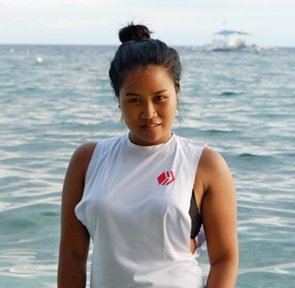
Mermaid by day, Witch by night. Dive into Clara's world of bliss as she ventures out into the universe and travel to awesome destinations. Join her as she take on the road to self-discovery and limitless possibilities.
If her content made you 😁, then drop some ❤️ by upvoting and leaving a comment. Also, click the Follow button to keep posted on her whimsical musings.
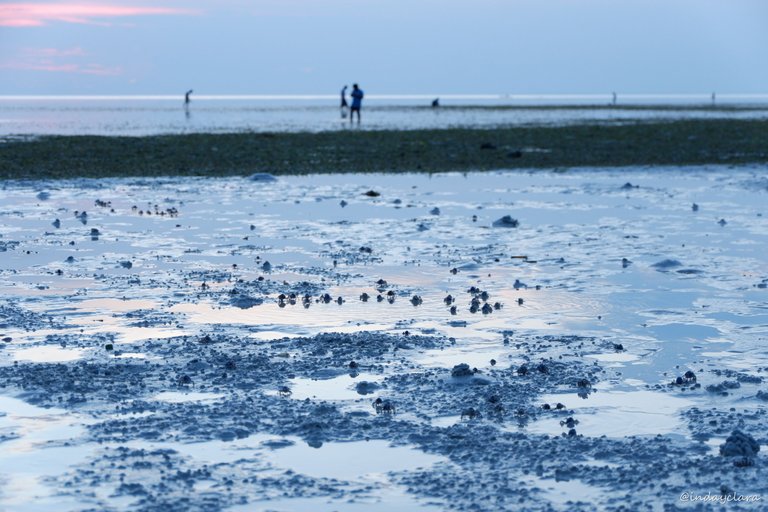
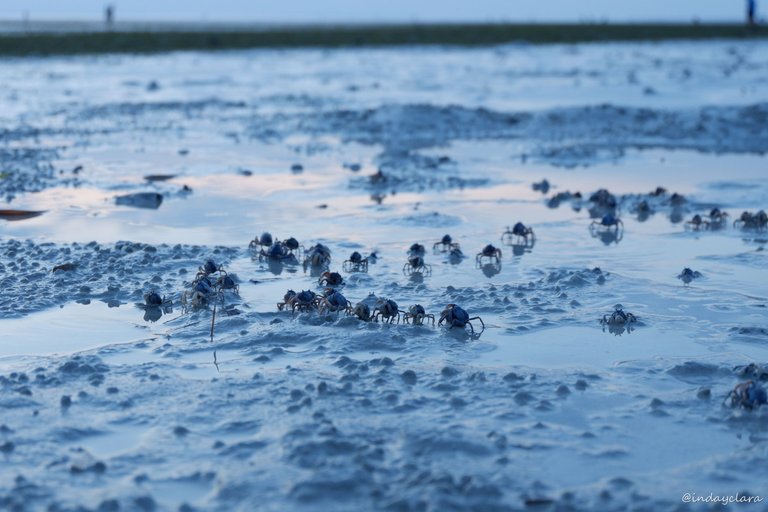

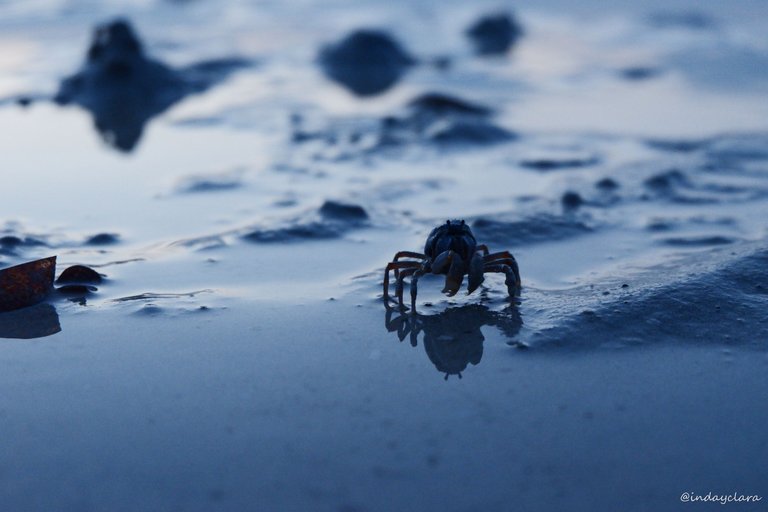
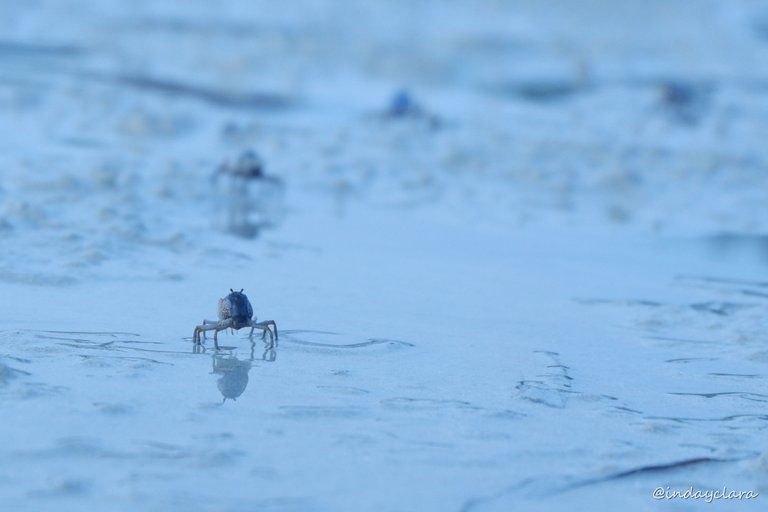

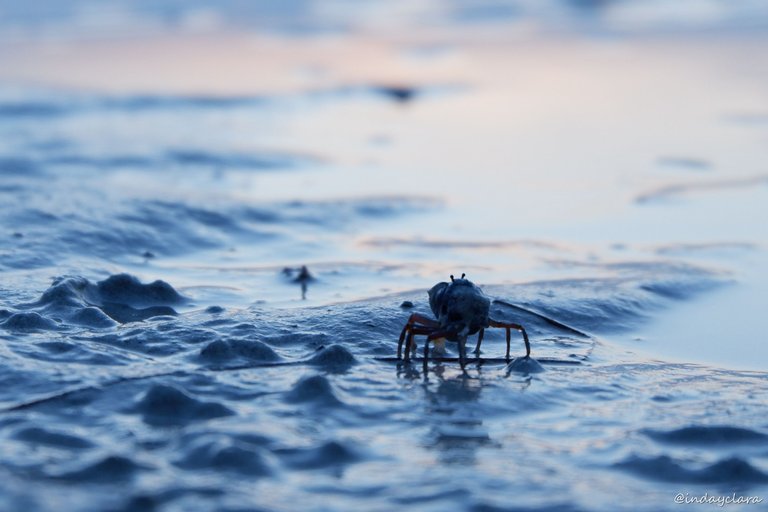

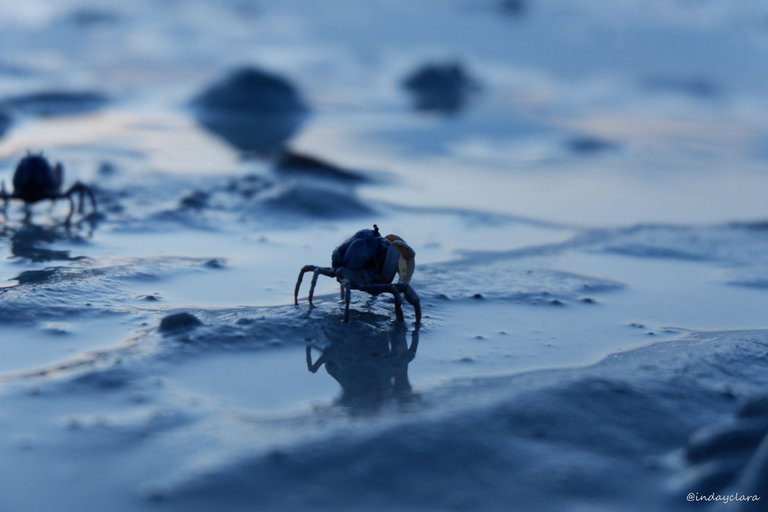
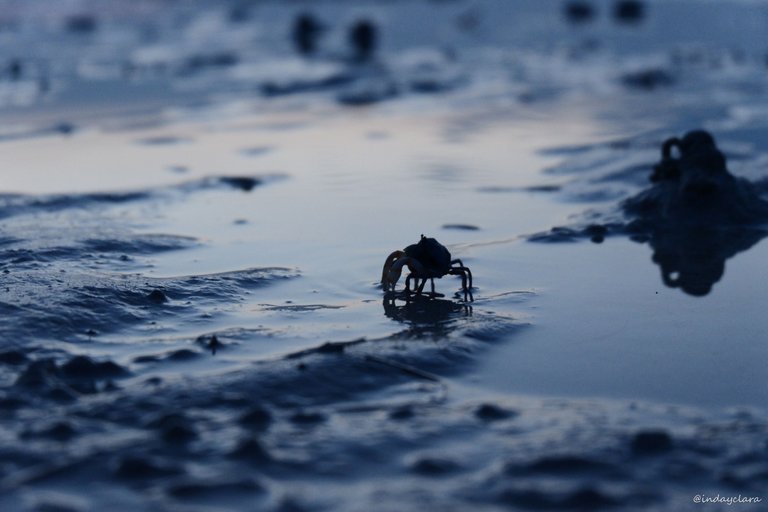
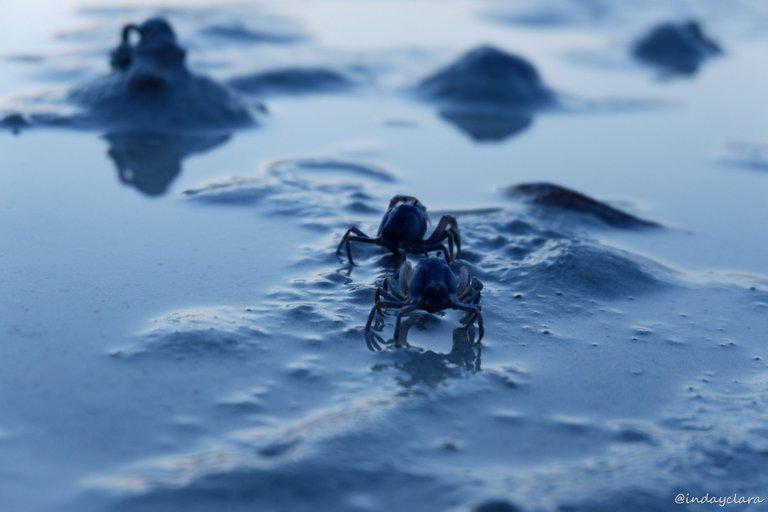

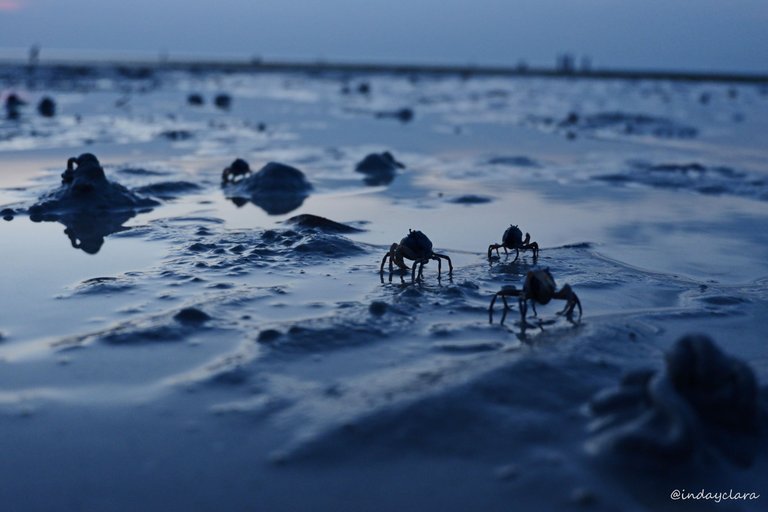
Fascinating creatures. I hope to meet them too one day. So far, my most common "crabby encounters" were the ones with the Atlantic Ghost Crab (also a pretty cool name, right? :D)
Nice photos @indayclara , those crabs are cute to watch 🦀. I miss this place, the moment I have here is unforgettable.
Thanks @intoy.bugoy! We might see them on our next visit. Its something to look after to.
!ENGAGE 10
ENGAGEtokens.choya sa ila porma gud, duol rman pud mig dagat dri pero wla ko kita ani na porma na crab ba.
Waaah. Thanks @jayparagat! yes. murag sa san rem pasad ko nakabantay ani na clasihang crabs.
This is cool! Its very interesting to know that these little creatures are the one that makes little burrows in the sand. I always spot little burrows but didn't know its from them. Nice work!
great photos @indayclara last time i went to San Rem i remember these little crabs. so amazed by it. your hometown is beautiful!
Hi @asasiklause! Thats good to hear a lot has also seen this tiny warriors! Thanks for dropping by!
Crabs, crabs, we love crabs!😍🦀 @indayclara there are some incredible photos!📸 These crustaceans are and will always be an emblem of the sea, and although many do not know the role of crabs in their ecosystem they will always be very important. Thank you very much for the information shared, it is super interesting, thank you for this post!😍
Your welcome! Will be encouraging others to share their knowledge and stories on this community.
Great and well written post about the Mictyris longicarpus, with some really beautiful pictures in it ^^
We appreciate your work and your post was manually curated by @adalger from the DNA team!
Reach us on Discord to learn more about the project!
Wow! Ka nice sa pics sa mga crabs. Murag mga gagmay na warriors 🙈 Hala Only in San Rem ra gyud ni sya ba. We went to San Rem Cultural Center & Leisure months ago. Didto nakakita meg mga inana tung pag low tide. Ka amazing kaayo ba. 🦀🦀🦀🦀🦀🦀🦀
Yay! Was really hoping that somehow hindi ako nagiisa seeing these wariors! haha. Thanks for dropping by!
Great post about these crabs 🦀 .. and the fotos are looking sooo beautiful .. I like this little fellows 😄
Thank you @adalger! I now appreciate these little soldiers even more after knowing these facts!
Hehe, actually this is what I like so much about nature and research .. if you find something interesting or beautiful and decide to look a bit further into the background of it, then you are constantly surprised with amazing facts s there are countless interesting facts always to be discovered 😉
Agree on you about this! Thank you for the curation as well! Greatly appreciate it!
@tipu curate ;)
Upvoted 👌 (Mana: 0/88) Liquid rewards.